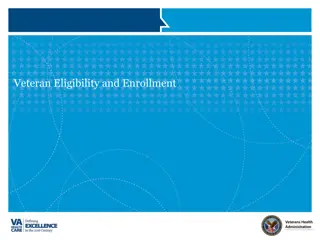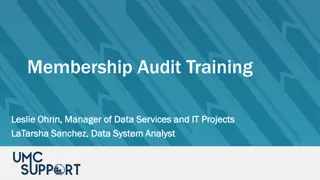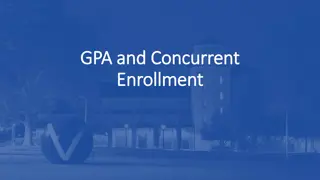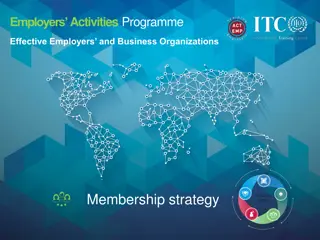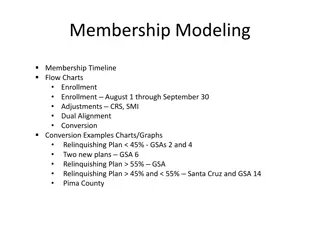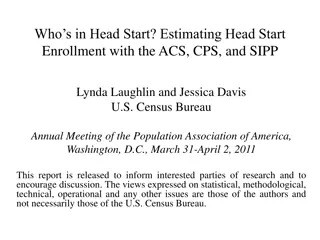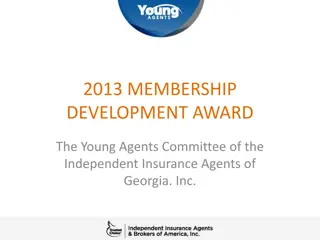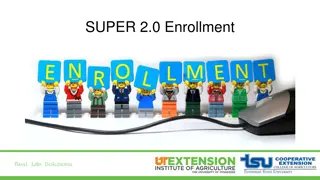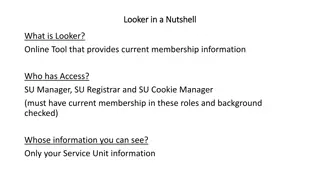
Employee Benefits Eligibility and Membership Information 2025
Learn about the eligibility criteria for retirement benefits programs such as SCRS, State ORP, and PORS in fiscal year 2025. Understand who is eligible, exceptions for mandatory membership, eligibility criteria for police officers, firefighters, and peace officers, and types of workers ineligible to join these programs. Explore membership classes and their impact on retirement eligibility and benefits calculation.
Download Presentation

Please find below an Image/Link to download the presentation.
The content on the website is provided AS IS for your information and personal use only. It may not be sold, licensed, or shared on other websites without obtaining consent from the author. If you encounter any issues during the download, it is possible that the publisher has removed the file from their server.
You are allowed to download the files provided on this website for personal or commercial use, subject to the condition that they are used lawfully. All files are the property of their respective owners.
The content on the website is provided AS IS for your information and personal use only. It may not be sold, licensed, or shared on other websites without obtaining consent from the author.
E N D
Presentation Transcript
Membership and enrollment: eligibility Retirement Benefits Training Fiscal year 2025
Who is eligible? SCRS is available to employees of: State agencies; Public school districts; Public higher education institutions; Participating charter schools; and Participating optional employers, such as local subdivisions of government. State ORP is available to employees of: State agencies; Public school districts; Public higher education institutions; and Participating charter schools. 2
SCRS, State ORP mandatory membership exceptions For eligible positions, membership is a required condition of employment unless employee is: A school bus driver; Earning less than $100 per month; In a non-permanent position or works as a day laborer; One of certain hospital workers (see S.C. Code 9-1-580); A part-time elected official earning less than $9,000 per year; or Elected to the S.C. General Assembly during or after November 2012. Membership exceptions apply only if the employee is not already an existing member. Employee must make a timely election to decline membership or will default into SCRS membership. 3
PORS eligibility Police officers, defined as those who: Preserve public order; Protect life and property; and Detect crimes in the state. Firefighters, defined as those who prevent and control property destruction by fire. Employer must have optional firefighter coverage. Peace officers, defined as those responsible for custody or control of inmates at: S.C. Department of Corrections; S.C. Department of Juvenile Justice; or S.C. Department of Mental Health. Magistrates. Coroners, deputy coroners in a full-time, permanent position. Probate judges may choose SCRS or PORS. Employee must: Earn at least $2,000 annually; and Devote at least 1,600 hours per year to position. Probate judges, magistrates exempt from these requirements. 4
Types of workers ineligible to join SCRS, State ORP, PORS Non-employees. Independent contractors. Students employed by the school they are attending. People compensated solely by per diem reimbursements. Retired members of SCRS or PORS may not participate as active members in SCRS, PORS or State ORP. 5
SCRS, PORS membership classes Class Two Class Three Earned service began prior to July 1, 2012 Earned service began on or after July 1, 2012 Membership class affects: Service retirement eligibility; Average final compensation calculation; and Credit for unused leave at retirement. 6
Correlated systems SCRS and PORS are correlated systems. Complementary relationship as defined by statute. If member has service credit in both systems, service credit is combined for purpose of determining eligibility for benefits, but not for calculating the amount of benefits. See the Covered Employer Procedures Manual for more information. 7
Disclaimer This presentation does not constitute a comprehensive or binding representation of the employee benefit programs PEBA administers. The terms and conditions of the employee benefit programs PEBA administers are set out in the applicable statutes and plan documents and are subject to change. Benefits administrators and others chosen by your employer to assist you with your participation in these employee benefit programs are not agents or employees of PEBA and are not authorized to bind PEBA or make representations on behalf of PEBA. Please contact PEBA for the most current information. The language used in this presentation does not create any contractual rights or entitlements for any person. 8


